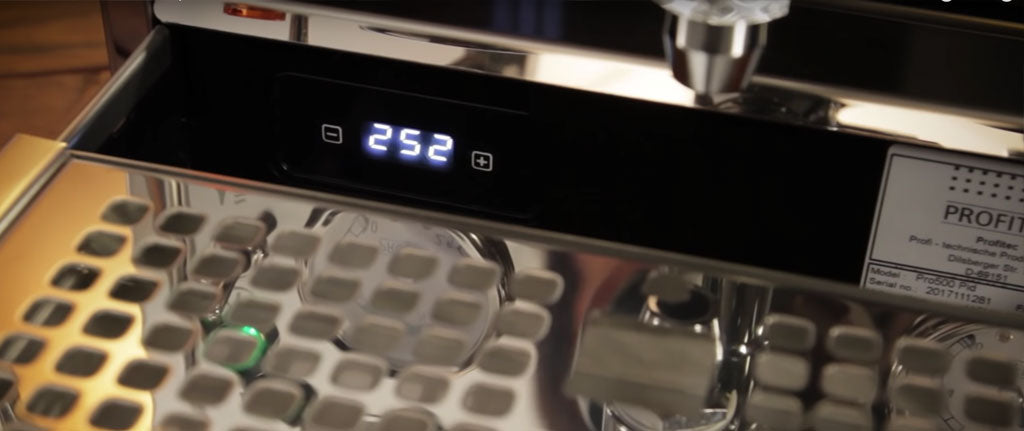Product Review: Profitec Pro 500 PID Espresso Machine
There was a bit of chatter around the office when we first learned that Profitec would be adding a PID to the Pro 500. Up to that point, it was one of our most popular heat exchange offerings, and the inclusion of a PID seemed like more of a novelty at the time. Yet, as is the case with most things, seeing would be believing and the Profitec Pro 500 PID was ushered in as a more than worthy successor.
So what’s the big difference between a PID and a pressurestat when it comes to heat exchange machines? The short answer is stability. The molecules that make up water are constantly moving and vibrating. When they’re cold, they pack closely together. When they’re hot, they scatter. In this way, temperature and pressure are intrinsically linked. As its name suggests, a pressurestat monitors pressure inside of the boiler to determine when to send power to the heating element.
When you’re dealing with a PID, a control loop feedback mechanism is being used to monitor and correct for variables inside of the boiler at all times. The result is a system that more actively adjusts conditions in the boiler to achieve a far more stable temperature. These adjustments are displayed on the PID screen via a small dot that appears when the boiler is being heated.

I like to think of it like a wobbly wheel on a shopping cart. With a slight wobble, you can push the cart and it will travel in a fairly straight line; with more severe wobbling, the cart won’t travel nearly as straight. The stable and unstable carts are your boiler temperature, and on a heat exchange machine that affects brew water temp as well. In order to stabilize it as much as possible, Profitec made two key changes to the Pro 500. First was adding the PID to more actively regulate the boiler, and second was to refine the thermosiphon in the E61 group. Based on our own testing this largely eliminates the need to perform a cooling flush as the PID controller keeps boiler temperature swings within 1° F as opposed to 10° F that we’ve observed with pressurestats.
It’s important to point out that the Pro 500 was already a heavyweight among our heat exchange lineup. It bares the distinction of being one of our easiest prosumers to self-service, thanks to its uncomplicated internal layout. Brewing and steaming were (and still are) handled by a 2 liter stainless steel boiler with a 1400W heating element with brew and steam pressure gauges on the front of the machine. The PID is tucked away behind the drip tray, and the housing is a reflective polished stainless that accentuates the classic look of the E61 group. Rounding out the package are a pair of spring loaded steam and hot water knobs for reduced wear, and a one-piece steel frame.
At this point you may be wondering where the Pro 500 PID fits within Profitec’s catalog. Michael Hauck, the CEO and engineering mind behind many of the innovations present on their machines has worked hard to prevent overlap between their products. The Pro 300 serves as a fast and affordable dual boiler for people who don’t need tremendous steam power, while the Pro 700 is complete with dual PIDs, full sized boilers and a plumbable rotary pump. Between those two machines, the Pro 500 PID offers incredibly stable brew temps and great steaming power.
When compared to contemporaries like the Expobar Office Lever which boasts one of the greatest values in the heat exchange category, or the Rocket Espresso Mozzafiato Type V whose aesthetic and historic attributes contribute to its price tag, the Pro 500 PID distinguishes itself quite nicely. Its build quality (including a stainless boiler, single piece steel frame, and spring loaded steam and hot water knobs), subtle style, and incredible brewing performance makes it an attractive choice for any serious home barista to consider.

 Canada
Canada
